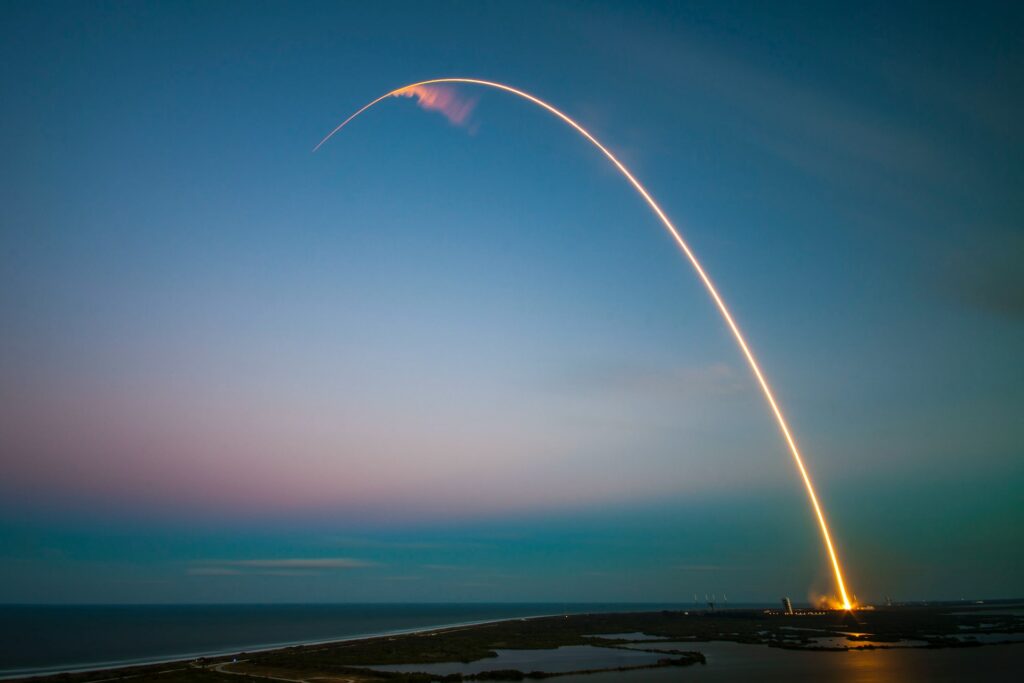The space economy is quantified at around USD 378 billion by 2020, growing by 12% compared to USD 337 billion in 2016, according to the report prepared by Intesa Sanpaolo Innovation Center.
All the different sub-segments of the Space Economy grew between 2016 and 2020 and will grow in anticipation to 2030. Interestingly, according to Morgan Stanley’s analysis reported by Statista, second-order impacts (i.e. the additional turnover generated in other sectors resulting from the adoption of space technology or services) are expected to reach $100 billion in 2030 and $411 billion by 2040, weighing in at around 40% of the value of the entire Space Economy.
The Italian ecosystem dedicated to aerospace is characterized by a very heterogeneous set of players working in close collaboration with each other: this is because historically the aerospace sector has seen the public sector on the one hand financially supporting organizations in the sector, and on the other hand being the main customer of the them.
Since the beginning of the new century, the digital industrial revolution and the advent of the New Space Economy have led to the opening up of the entire aerospace sector to the market, in which an increasing number of private operators bring fresh capital for commercial initiatives, allowing the public decision-maker (through its money) to assume a less operational and more steering role.
Companies in the sector are very focused on innovation, which represents a strategic and competitive lever: on average about 11% of annual turnover is invested in research and development expenditure, totaling almost EUR 1.4 billion.
Although aerospace companies employ only 0.21% of Italian workers, they account for approximately 8.4% of the total research and development expenditure incurred by the country’s companies (EUR 16.6 billion). In addition to investments in innovation, the companies in the sector are working together with the academic and scientific and scientific system, taking advantage of the infrastructure and associated services, assisted by regulatory bodies.
regulatory bodies.
The sector is approximately 50% composed of companies that produce aircraft, spacecraft and related devices, and around 20 percent of companies specializing in repairs. The remaining approximately 30% is made up of companies dedicated to the manufacture of equipment, software and flight.
Of the 500 companies in the sector, about half (53%) are micro-enterprises, with an annual turnover of less than EUR 2 million and fewer than ten workers. Focusing on the employment requirement alone, it rises to over 66% the number of companies employing less than five employees, while only about 6% employ more than one hundred.
In the fixed-wing aircraft market, the national scene is made up of an important number of companies that play a role in qualified supplies to the programs of Boeing and Airbus, the main giants in the large commercial aircraft market. In the regional aircraft segment, ATR (a 50/50 joint venture between Leonardo and Airbus) dominates the turboprop regional aircraft market. In the engine segment, the main national player is Avio Aero, GE Aviation’s European headquarters for the design and development of thrusters and a reference company for turbine modules, mechanical transmissions and combustors of aircraft engines.
As far as the space segment alone is concerned, the approximately 200 Italian companies of which it is composed are 80% small and medium-sized. The sector employs a total of about 7,000 people (alone, the large companies Avio, Selex ES, Telespazio and Thales Alenia Space Italia employ about 80% of the workforce), who can generate an annual turnover of about annual turnover of around EUR 2 billion.
According to a more inclusive logic, there are 286 companies in the space sector in Italy. Of these, as many as 17% focus on R&D activities and services, where one can find companies producing satellites and/or complex engineering systems, as well as players specialized in Earth observation activities. 14% of the companies are active in the electronics sector, with a predominance of manufacturers of telecommunications equipment and navigation and measuring instruments, while 12% provide engineering studies. There is also no shortage of companies in metalworking (8%), for the production of special materials suitable for space, and of special materials suitable for space, and in the production of machinery and components (3.5%).
In general, for the entire aerospace sector, the market success of the large players is the result of synergies and support from a large number of smaller companies and research centers, which make up a value chain capable of importing and exporting expertise to and from other industries. There are also a growing number of innovative start-ups and promising academic spinoffs that can help preserve the sustainability of the industry and national leadership in the future.
The geographical distribution of aerospace companies sees a significant concentration in the North-West, where just under a third of the approximately 500 total companies are located, while the North-East, Centre and South see 20.9%, 23.4% and 19.5% respectively in the South (the remaining 3.1% in the Islands).
The regional distribution sees the primacy of Lombardy with 18.7% of the companies, followed by Lazio (14.2%), Campania (11.5%), Piedmont (9%) and Emilia-Romagna (8.5%).

